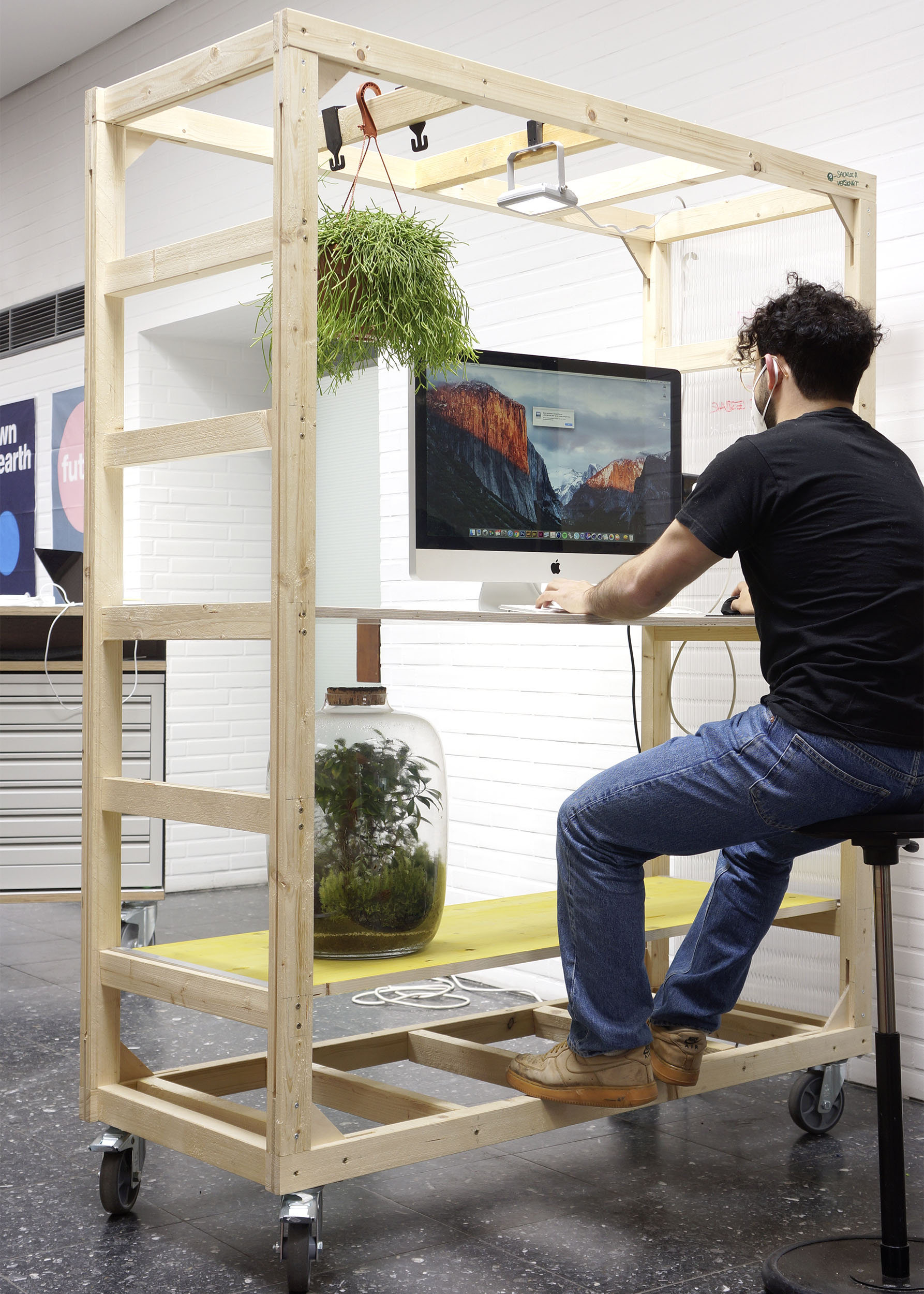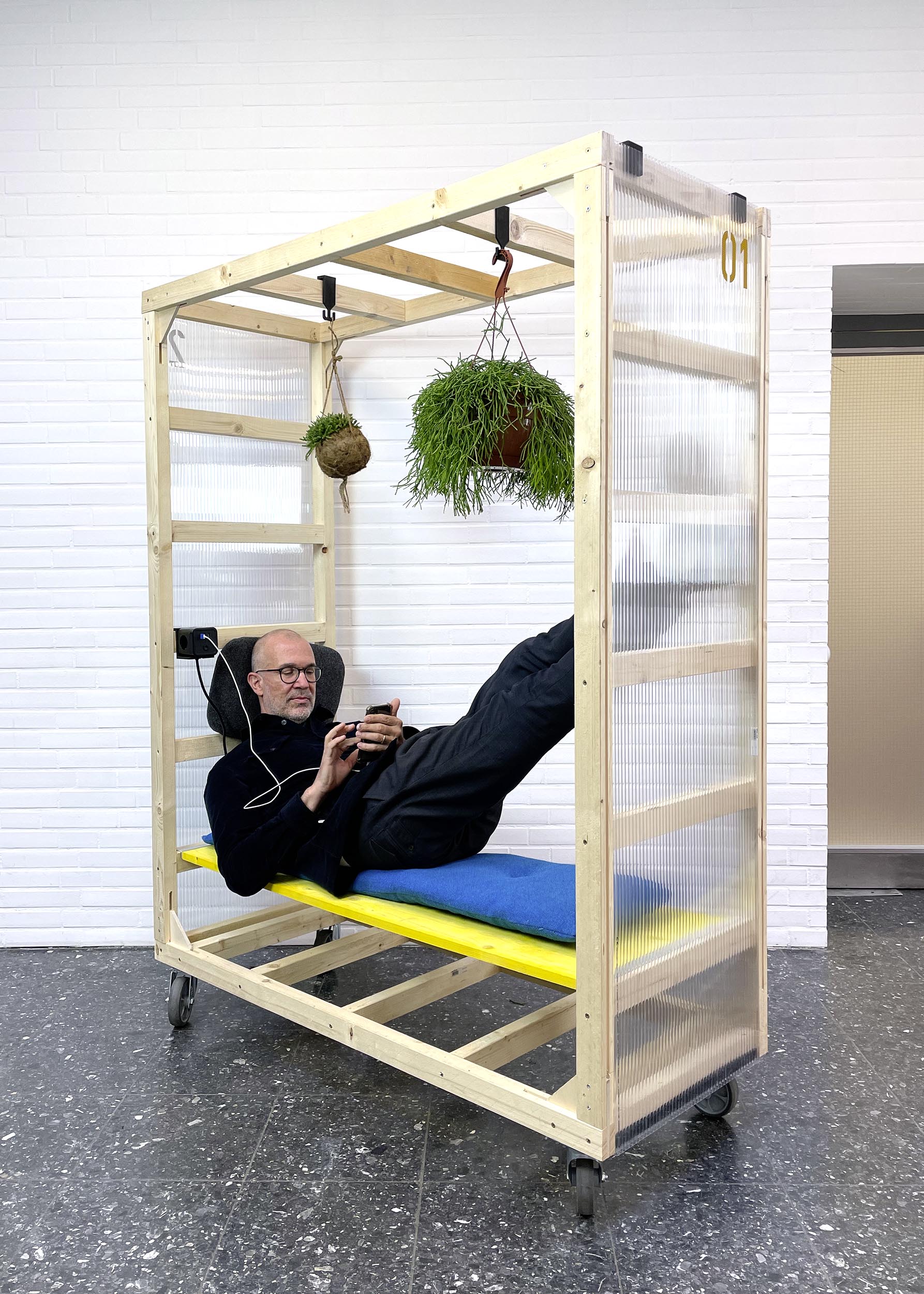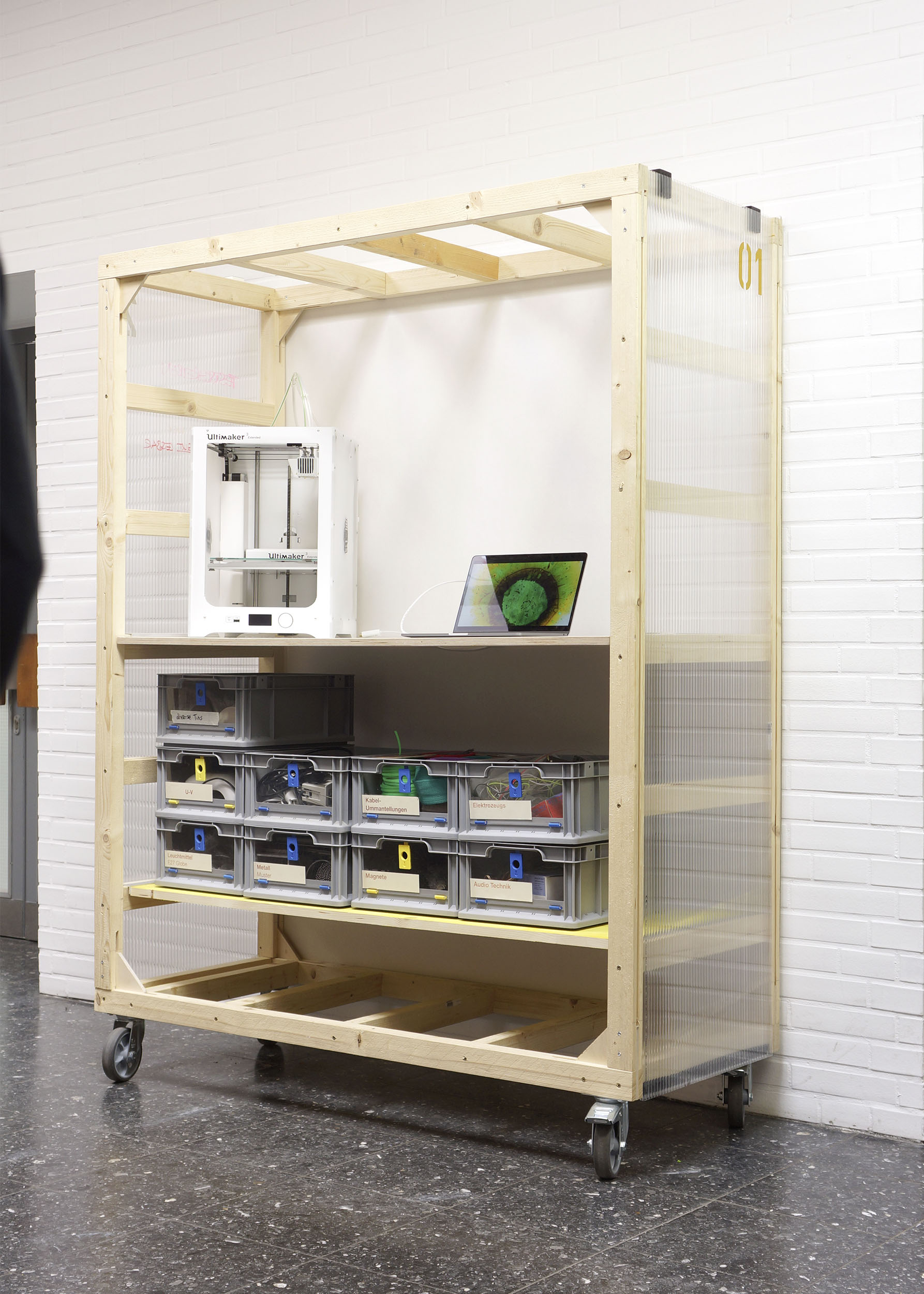FRAMEWORKER
Smart Learning Companion
New module system for contemporary, future-oriented, and sustainable learning in a digitalized world.
How do we want to learn and live in the future? We used the COVID pandemic to feel and think forward with young people. Which core themes could schools tackle in the future? What should learning feel like considering continuous digitalization? What could a new learning environment look like? This is how we envision it: moving and yet connected, adaptable with a flick of the wrist, and pretty casual.
“Appropriate technology reminds us that before we choose our tools and techniques we must choose our dreams and values [...]”
Tom Bender, Rainbook, Publications 1974
It’s not about hardware but about new ideas. A suitable and sustainable environment must be adaptable and follow the creativity of young people. We can learn a lot by accompanying them in dreaming up and testing new possibilities for society and the planet.

In the spirit of “Appropriate Technology”, we designed a sustainably flexible learning environment based on a furniture module, FRAMEWORKER.
Creating space for possibilities
Our FRAMEWORKER is a mobile, robust piece of multi-purpose furniture. The scaffold-like and instantly adaptable frame construction can be filled with whatever we need for our future: us and our ideas and visions, tools and helpers from scissors to 3D printers, screens to plants. The different hardware plug-ins turn the mobile room element into a quick-change artist: workplace, showroom, monitor wall, stage, studio, projection screen, counter, sofa, bench and cave, retreat, or storage shelf. Combining several modules creates meeting pods, corner workstations, or lounge landscapes.
“How can the changing learning culture in schools be reflected in existing buildings? Pedagogical concepts are changing, the focus of content is shifting, and the framework will also have to adapt. Solutions are needed for flexible learning settings at all levels and in all rooms. The equipment is an important component that should continue to develop.”
Adrian Krawczyk, consultant for spatial concepts in all-day education, Hamburg
Focus on the equipment – the right basis for change
The demands of the learning environment require an inherent ability to transform and to change shape. FRAMEWORKER stands on castors to create a wide variety of learning environments. Different equipment can be placed in specific sequences and constellations. Depending on the setting, a FRAMEWORKER is not just a self-contained learning and working area but a networked part of a learning environment that requires room dividers and acoustic screening.
The distances between the ladder bars and the respective heights from the floor were selected according to ergonomic standards for table and seat heights, as well as shelves and platforms. Each bar is notched at the top so that shelves and side and rear panels can be easily attached. The material and surface of the walls can be freely selected according to their purpose and can be, for example, an opaque blackboard or an acoustically shielding pinboard.

Mapping learning processes spatially
Rapid technological and infrastructural developments also require agile, constantly changing methods for organizing and working in educational ecosystems. Learning and acting in the digitalized world, the holistic development, linking, and application of knowledge requires a holistic transfer of these behaviours into spatial design. Understanding and using connectivity as an opportunity to train network skills, construct knowledge individually and collectively, organize thinking, and act in creative collaboration requires a corresponding design pattern.
It embodies the paradigm shift in the structuring of learning – the space follows the user, contributes as an adaptable and empowering tool and takes on a co-creative role.
Teaching with the learning frame – the training parkour for shaping the world of tomorrow. Here, “appropriate technology” stands for solving problems with the right technologies, so that the tools are learned with a larger goal in mind and not just for the purpose of mastering them. In this way, the use of digital tools can be learned correctly on the basis of a question. An example: “Birds also suffer from housing shortages in Hamburg.” Task: Thinking through the project with digital tools.
In order to find a solution to the problem of the housing shortage of birds in Hamburg, one must first understand the problem. Research into birds living in the city, their characteristics and nature, discussions with environmental organizations and the city provide the basis. It turns out that founding an initiative for more bird boxes in the city is a good strategy. The initiative can, for example, involve collecting donations, building nesting boxes and researching and providing places for nesting boxes. Then, in the learning session, new nesting boxes are developed as a DIY construction kit, existing data sets are downloaded from the internet, developed further and printed out as a model on the 3D printer.
“Connectivity is the most powerful mega-trend of our time.”
Matthias Horx, Zukunftsinstitut
From classroom to adventure parkour
In its diversity and fusion with the real world, the digital world offers countless opportunities to realize ideas and ideals. Together with pupils, teachers want to explore, evaluate and shape the newly emerging scope for action with a focus on the possibilities of using digitalized content in learning settings. And to empower them to take the future into their own hands in an agile and confident manner.
We developed, tested and refined the FRAMEWORKER together with them. In combination with the round table as an ideal spatial networking medium, large tables, stands, lounge furniture and stools, an innovative, image-building learning environment is created.






